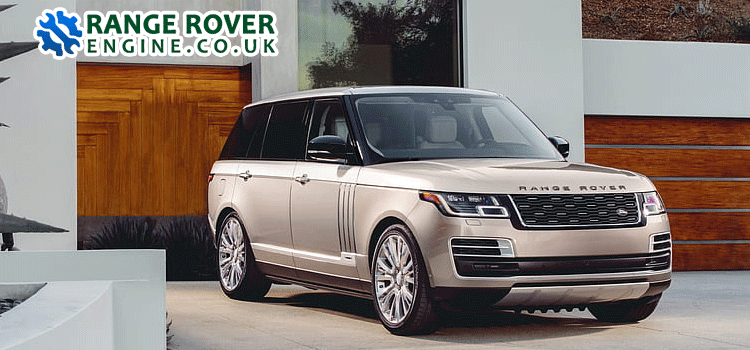How Does The Range Rover 2.0 Engine Adapt To Different Driving Modes?

The Range Rover 2.0 engine is a marvel of modern automotive engineering, offering versatile performance through its various driving modes. This adaptability ensures that the vehicle delivers optimal performance, efficiency, and comfort regardless of the driving conditions. We will explore how the Range Rover 2.0 engine adapts to different driving modes, highlighting the engine’s capabilities and benefits in each scenario.
Introduction to Range Rover 2.0 Engine and Driving Modes
The Range Rover 2.0 engines is designed to offer a balance of power and efficiency. With a range of driving modes available, the engine can adapt its performance characteristics to suit various driving conditions. These modes include Eco, Comfort, Dynamic, and Off-Road, each tailored to enhance specific aspects of the driving experience. Understanding how these modes work can help drivers make the most of their Range Rover’s capabilities.
Eco Mode: Maximizing Fuel Efficiency
Eco mode is designed to maximize fuel efficiency by adjusting the engine’s power output and throttle response. In this mode, the Range Rover 2.0 engine operates with a focus on reducing fuel consumption. The throttle response is softened, and the transmission shifts to higher gears earlier to keep the engine running at lower RPMs. This results in a smoother, more relaxed driving experience that prioritizes fuel economy over performance. For those looking to minimize their environmental impact, Eco mode is an excellent choice.
Comfort Mode: Balancing Performance and Relaxation
Comfort mode strikes a balance between performance and comfort. In this mode, the engine delivers a smooth and refined driving experience, with a focus on minimizing vibrations and noise. The throttle response is more linear, and the suspension settings are adjusted to absorb road imperfections more effectively. This mode is ideal for everyday driving, providing a comfortable ride without sacrificing too much in terms of performance. Whether you’re commuting to work or taking a long road trip, Comfort mode ensures a pleasant journey.
Dynamic Mode: Enhancing Performance and Handling
Dynamic mode is all about performance. When activated, the Range Rover 2.0 engine responds more aggressively to throttle inputs, delivering quicker acceleration and sharper handling. The suspension is stiffened, and the steering becomes more responsive, providing a sportier driving experience. This mode is perfect for drivers who enjoy a more spirited driving style, offering enhanced control and precision. Dynamic mode transforms the Range Rover into a more performance-oriented vehicle, making it a joy to drive on winding roads and open highways.
Off-Road Mode: Tackling Challenging Terrain
Off-Road mode is designed for tackling challenging terrain. In this mode, the engine and transmission settings are optimized for low-speed control and maximum traction. The throttle response is softened to provide better control over rough surfaces, and the suspension is raised to increase ground clearance. The all-wheel-drive system is also adjusted to ensure optimal power distribution to all four wheels. This mode is essential for drivers who frequently venture off the beaten path, providing the confidence and capability to handle a variety of off-road conditions.
The Role of Engine Replacement in Maintaining Performance
Engine replacement is a crucial aspect of maintaining the performance of the Range Rover Engine. Over time, engines can wear out or suffer from damage, affecting their ability to adapt to different driving modes. Replacing a worn-out engine with a new or reconditioned one can restore the vehicle’s performance and ensure it continues to operate efficiently. Engine replacement services, including supply and fit, offer a convenient solution for maintaining the longevity and reliability of the Range Rover 2.0 engine.
Benefits of Reconditioned Engines
Reconditioned engines provide a cost-effective alternative to purchasing a brand-new engine. These engines are rebuilt to meet or exceed the original specifications, ensuring they perform as well as new engines. Reconditioned engines undergo a thorough inspection and refurbishment process, replacing worn or damaged parts with new components. This process restores the engine’s performance and reliability, making it a viable option for those looking to extend the life of their Range Rover 2.0 engine without the high cost of a new engine.
Supply and Fit Services: Convenience and Expertise
Supply and fit services offer a convenient and efficient way to replace or recondition the Range Rover 2.0 engine. These services provide a one-stop solution, sourcing the engine and handling the installation process. By utilizing supply and fit services, drivers can ensure that their engine replacement or reconditioning is carried out by experienced professionals, guaranteeing optimal performance and reliability. This approach saves time and effort, allowing drivers to get back on the road quickly with confidence in their vehicle’s capabilities.
Conclusion:
The Range Rover 2.0 engine’s ability to adapt to different driving modes is a testament to its advanced engineering and versatility. Whether prioritizing fuel efficiency in Eco mode, enjoying a smooth ride in Comfort mode, seeking spirited performance in Dynamic mode, or tackling tough terrain in Off-Road mode, this engine delivers exceptional performance tailored to the driver’s needs. Regular maintenance, including engine replacement and reconditioned engines, along with supply and fit services, ensures that the Range Rover 2.0 engine continues to perform at its best. By understanding and utilizing these driving modes, drivers can optimize their Range Rover experience for every journey.


